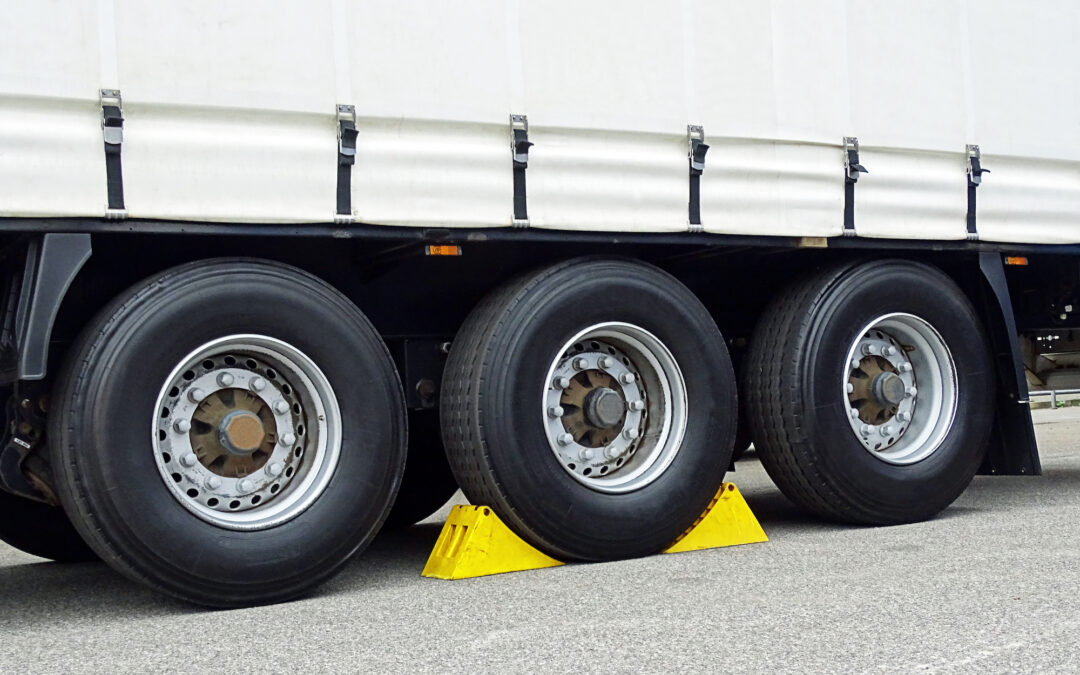When parking on a dock, set the brakes including the emergency brake, per FMCSA 49 CFR 393, and ensure the truck is parked securely as close to the dock as possible. When it comes to chocking the tires, the FMCSA does not require drivers of Commercial Motor Vehicles to chock the tires, However, OSHA
enforces wheel chocking on all vehicles that are not classified as CMV’s. Also, following the OSHA regulations are many distributing and receiving companies that set their own policies that require wheel chocking. Every day, workers are severely injured or killed, because trucks or trailer wheels were not chocked, or were incorrectly chocked.
Discussion Points:
• Know the policies set by the company
• Use chocks that are manufactured and regulated, and specific to the vehicle
• Never use blocks of wood as a substitute for chocks
• Always chock the wheels of truck or trailer before servicing the vehicle
• Always ensure the safety of yourself, coworkers and equipment
Discussion:
Always ensure the chock is in line with, and centrally-positioned against the tire. Only use chocks that are manufactured and regulated according to the tire diameter size and the gross vehicle weight, and use chocks in pairs. Positioning the chocks is important so the truck or trailer does not move. On grades, chocks should be placed in the direction of the grade. For downhill grades, place chocks in front of front wheels. Uphill grades, place chocks behind the rear wheels, and on level grades, it may be necessary to place a chock on both sides of the tire. Even though OSHA requires chocking only rear wheels, best practice would be to chock each tire. Accidents happen every day. Ensure the safety of yourself and your coworkers by practicing and enforcing minimal safety standards.
As always, be safe out there!


Recent Comments